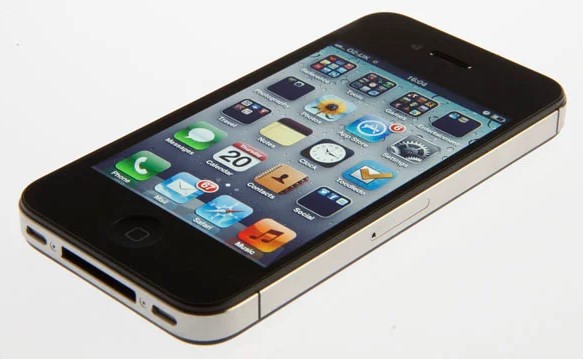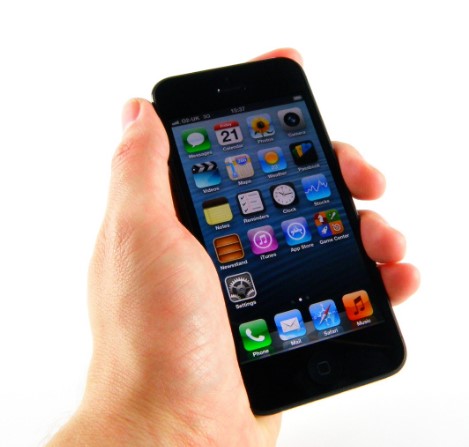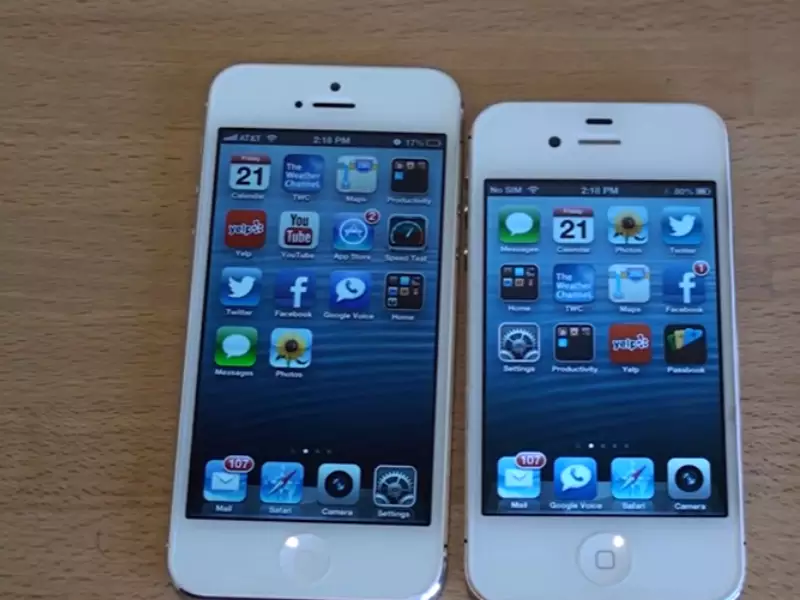When Apple launches a new iPhone, it’s not just a product release; it’s a global event that captivates tech enthusiasts and everyday consumers alike. The anticipation and speculation surrounding these launches are unmatched, making each model comparison a topic of keen interest. Specifically, the transition from the iPhone 4S to the iPhone 5 marked a significant leap in Apple’s design and technology trajectory, showcasing how even the smallest changes can make a big impact.
The iPhone 5 and iPhone 4S differ in several key areas, including design, display features, performance capabilities, and connectivity options. The iPhone 5 introduced a larger screen, a lighter and thinner design, improved processor speed, enhanced camera features, and better battery life, among other upgrades. These enhancements not only set a new standard for smartphones but also cemented Apple’s reputation for innovation and quality.
Focusing on the specifics, the shift from the iPhone 4S to the iPhone 5 represents Apple’s response to consumer demand for larger screens and more powerful devices that can handle the increasing complexity of mobile applications and services. With its taller display, the iPhone 5 offered more viewing area without compromising the phone’s portability. Additionally, the introduction of 4G LTE connectivity in the iPhone 5 marked a significant improvement in internet speeds, transforming the mobile browsing experience for users.

Design and Build
Size and Weight
When comparing the iPhone 5 to its predecessor, the iPhone 4S, the most noticeable difference comes in the size and weight. The iPhone 5, unveiled in September 2012, brought a significant design shift that aimed for a lighter and thinner profile.
- Comparison of dimensions: The iPhone 5 measures 123.8 mm in height, 58.6 mm in width, and has a depth of 7.6 mm. In contrast, the iPhone 4S stands slightly shorter and thicker, with dimensions of 115.2 mm by 58.6 mm by 9.3 mm. This reduction in thickness and increase in height allowed for a more sleek and modern appearance, making the iPhone 5 notably more comfortable to hold and use for extended periods.
- Weight differences: Weight plays a critical role in the user experience, influencing both the perception of quality and ease of use. The iPhone 5, with its 112 grams, feels significantly lighter than the iPhone 4S, which weighs in at 140 grams. This reduction in weight is a testament to Apple’s engineering efforts to enhance portability without compromising on performance.
Aesthetic Changes
Beyond size and weight, the aesthetic evolution from the iPhone 4S to the iPhone 5 is marked by material and color variations that catered to a wider range of consumer preferences.
- Materials used: The iPhone 5 introduced an aluminum casing, a departure from the stainless steel frame used in the iPhone 4S. This switch not only contributed to the lighter weight but also offered a different tactile experience, with the aluminum providing a cooler touch and less susceptibility to fingerprints.
- Color options: Color plays a significant role in personalizing technology. The iPhone 5 was available in two color schemes: black & slate and white & silver. This was a subtle change from the iPhone 4S, which offered black and white options, but the choice of accent colors in the iPhone 5 added a nuanced level of sophistication and personalization.
Display Features
The display is a pivotal aspect of any smartphone, influencing both user experience and device functionality. The transition from the iPhone 4S to the iPhone 5 saw notable improvements in screen size and display quality.
Screen Size
- Measurements and comparison: The iPhone 5’s screen size was a significant talking point at its launch. With a 4-inch diagonal, it offered more screen real estate compared to the 3.5-inch display of the iPhone 4S. This increase allowed for an additional row of icons on the home screen and more space for apps and content, improving usability and providing a more immersive viewing experience.
Resolution and Quality
- Pixels: The iPhone 5 and iPhone 4S share the Retina display technology, but the former’s larger screen comes with a resolution of 1136 x 640 pixels, compared to the 960 x 640 pixels on the iPhone 4S. This maintains the high pixel density, ensuring sharp and clear visuals.
- Retina display differences: While both models boast the Retina display, the iPhone 5’s screen supports a wider aspect ratio. This adaptation is key for watching videos and playing games, as it aligns better with standard widescreen formats, reducing letterboxing and making full use of the screen’s real estate.
Performance
The internal specifications largely determine a smartphone’s capabilities, affecting everything from multitasking efficiency to the smoothness of running complex applications. The upgrade from the iPhone 4S to the iPhone 5 brought significant improvements in processor speed, RAM, and storage options.
Processor and Speed
- Specifications and speed tests: At the heart of the iPhone 5 is the A6 chip, a considerable upgrade over the A5 chip found in the iPhone 4S. This new processor was designed to offer up to twice the performance and graphics power, enabling faster app launches, more responsive gaming, and smoother multitasking. Benchmark tests revealed that the iPhone 5 consistently outperformed its predecessor in processing speed, rendering it a more capable device for handling the increasingly demanding applications and services.
RAM and Storage Options
- Capacity differences: Both the iPhone 5 and the iPhone 4S come with 1GB of RAM, which was sufficient for the operating systems and applications at their respective times of release. However, the iPhone 5 introduced a wider range of storage options, available in 16GB, 32GB, and a new 64GB model. This expansion in storage capacity allowed users to store more apps, photos, videos, and music directly on their device, accommodating the growing digital content consumption trends.

Connectivity
Network Support
The introduction of 4G LTE support in the iPhone 5 was a monumental shift in connectivity, providing speeds that were significantly faster than the 3G network supported by the iPhone 4S. This enhancement not only improved web browsing and download speeds but also enhanced the overall user experience with smoother streaming of video content and more reliable internet connectivity.
- 4G LTE vs 3G: The transition from 3G to 4G LTE technology marked a new era in mobile internet connectivity, offering speeds up to ten times faster than its predecessor. Users could enjoy high-definition video calls, stream HD videos without buffering, and download content in seconds, which were substantial improvements over the capabilities of 3G.
Wi-Fi and Bluetooth
Version upgrades in Wi-Fi and Bluetooth technologies in the iPhone 5 also contributed to its superior performance and connectivity range. The iPhone 5 supports dual-band 802.11n Wi-Fi, which allows for a more robust and faster internet connection compared to the single-band Wi-Fi available on the iPhone 4S. Moreover, Bluetooth 4.0 in the iPhone 5 introduced low-energy wireless communication, enhancing device connectivity while optimizing battery life.
Camera Capabilities
Main Camera
The resolution and features of the iPhone 5’s main camera maintained Apple’s commitment to high-quality photography. Both the iPhone 5 and the iPhone 4S are equipped with an 8-megapixel rear camera, but the iPhone 5 introduces several enhancements, including improved HDR capabilities, better low-light performance, and a faster photo capture.
- Resolution, features comparison: Despite the same megapixel count, the iPhone 5’s camera sensor and software optimizations allow for clearer, more vibrant photos with reduced noise, especially in low-light conditions.
Front Camera
The upgrade in the quality and functionality of the front camera from the iPhone 4S to the iPhone 5 was significant, moving from a VGA-quality camera to a 1.2-megapixel front camera. This upgrade not only improved the quality of FaceTime video calls but also encouraged the burgeoning trend of selfies.
- Quality and functionality: The iPhone 5’s front camera supports 720p HD video recording, offering a much clearer and more enjoyable experience for video calls and selfies, marking a considerable step forward in front-facing camera technology.
Battery Life
One of the most critical aspects of any smartphone is its battery life. The iPhone 5 introduced a slightly larger battery compared to the iPhone 4S, leading to improvements in both standby time and usage.
- Standby time and usage comparison: The iPhone 5 boasts up to 8 hours of talk time on 3G, up to 10 hours of internet use on Wi-Fi, and up to 225 hours of standby time. In comparison, the iPhone 4S offered slightly less in each category, reflecting the efficiency improvements in the iPhone 5.
- Charging technology: While both models use Apple’s proprietary 30-pin connector for charging, the iPhone 5 introduced the smaller, reversible Lightning connector, which was a significant change in charging and data transfer technology.
Software and Ecosystem
Operating System
At launch, the iOS versions that came pre-installed on the iPhone 5 and iPhone 4S were a crucial part of their overall functionality and user experience. The iPhone 5 debuted with iOS 6, which introduced several new features and improvements over iOS 5, initially available on the iPhone 4S.
- iOS versions at launch: iOS 6 brought in new functionalities like Apple Maps, Passbook, and Facebook integration, enhancing the ecosystem and offering a more integrated user experience.
App Compatibility
Differences in app support between the iPhone 5 and the iPhone 4S became apparent as developers began to take advantage of the iPhone 5’s larger screen and more powerful processor. This meant that certain apps and games were optimized to perform better or exclusively available for the newer model, leveraging its advanced capabilities.
Additional Features
Audio and Speakers
The sound quality comparison between the iPhone 5 and the iPhone 4S shows noticeable improvements, with the iPhone 5 boasting a redesigned speaker system that provided clearer audio with a broader dynamic range. This enhancement made listening to music, watching videos, and engaging in phone calls a more enjoyable experience.
Unique Attributes
The iPhone 5 introduced several model-specific features, such as the inclusion of a three-microphone setup, which improved voice clarity and noise cancellation during calls. Additionally, the introduction of the Lightning connector was a significant change, signaling a move towards better, faster, and more robust connectivity options for future devices.
Price and Availability
Initial Launch Prices
The initial launch prices of the iPhone 5 varied depending on storage capacity but generally started higher than those of the iPhone 4S at its launch. This pricing reflected the technological advancements and increased capabilities of the newer model.
Market Availability Over Time
Over time, the market availability of both models has shifted. The iPhone 5, like the iPhone 4S before it, eventually made way for newer models. However, both phones enjoyed considerable popularity in the secondary market due to their durability, reliability, and Apple’s continued support through iOS updates, until the devices reached the end of their update cycles.
Frequently Asked Questions
What are the design differences between the iPhone 5 and the iPhone 4S?
The iPhone 5 features a taller and slimmer design compared to the iPhone 4S, with a shift to an aluminum body that reduces its weight. This model transition also saw the introduction of a 4-inch screen, up from the 3.5-inch display of the iPhone 4S, allowing more content to be viewed without increasing the width of the phone.
How do the camera capabilities compare between the iPhone 5 and the iPhone 4S?
The iPhone 5 and iPhone 4S both have 8-megapixel rear cameras, but the iPhone 5 introduces improvements in low-light performance and image stabilization for video. The front-facing camera on the iPhone 5 is upgraded to 720p resolution, offering clearer video calls compared to the VGA front camera of the iPhone 4S.
What are the differences in battery life between the iPhone 5 and the iPhone 4S?
The iPhone 5 offers an improved battery life over the iPhone 4S, thanks to its more efficient processor and larger battery capacity. It provides up to 8 hours of talk time on 3G and up to 225 hours of standby time, which is slightly better than the battery performance metrics of the iPhone 4S.
Can the iPhone 5 run newer iOS versions than the iPhone 4S?
Yes, the iPhone 5 can run newer versions of iOS compared to the iPhone 4S. The hardware of the iPhone 5 supports updates to later versions of iOS, providing users with access to newer features and security enhancements that may not be available on the iPhone 4S.
Conclusion
Reflecting on the evolution from the iPhone 4S to the iPhone 5, it’s clear that this transition was more than just a step forward; it was a leap into the future of smartphones. Apple’s focus on refining the design, enhancing performance, and improving user experience set a new benchmark for what consumers could expect from their mobile devices. The iPhone 5 not only catered to the immediate needs of users but also anticipated the growing demands of mobile technology, setting the stage for future innovations.
As we look back on the significance of these models in the broader context of smartphone development, it’s evident that each iteration of the iPhone not only captures a moment in time but also pushes the envelope of what’s possible. The journey from the iPhone 4S to the iPhone 5 is a testament to Apple’s commitment to excellence and its unyielding pursuit of innovation, marking a pivotal chapter in the ongoing story of mobile technology.

